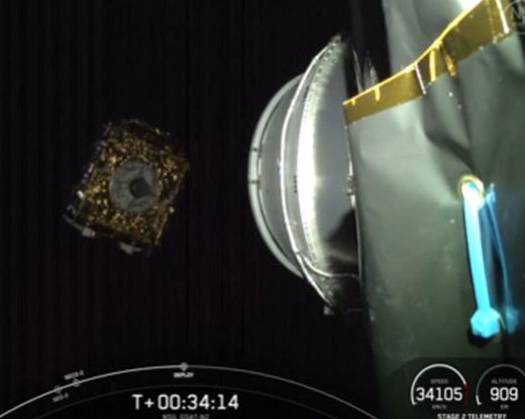Florida: On Tuesday, Elon Musk's SpaceX successfully executed the launch and deployment of India's communication satellite GSAT-N2 into its designated orbit, marking a significant milestone in the country's endeavor to enhance its broadband infrastructure.
This advanced satellite communication technology is poised to meet the burgeoning needs for broadband and in-flight connectivity across the nation.
The launch occurred from Florida, and SpaceX announced the mission's success at 12:36 am, confirming that the satellite was successfully placed in the Geosynchronous Transfer Orbit (GTO) as planned.
The Indian Space Research Organization (ISRO) has described the satellite as a "Ka-band high-throughput communication satellite," developed by ISRO's commercial entity, NewSpace India Limited (NSIL). This mission represents the second 'demand-driven' satellite project by NSIL. Utilizing the Ka-band frequency, GSAT-20 is designed to facilitate in-flight internet services and Smart Cities initiatives.
Union Minister Jitendra Singh expressed his appreciation for the launch, stating in a post on Twitter, "Kudos to the ISRO and SpaceX team for the successful launch of GSAT-N2. Under the visionary leadership of Prime Minister Narendra Modi, the collaboration between ISRO and SpaceX is aimed at augmenting internet services, including in remote regions and in-flight connectivity, with a mission duration of 14 years."
NewSpace India Limited has reported that the satellite, weighing 4,700 kg, is engineered to deliver high-throughput communication services, boasting a throughput capacity of 48 Gbps across India, including the Andaman and Nicobar Islands and Lakshadweep. It is designed to cater to the nation's broadband and in-flight connectivity requirements. The satellite has been placed in orbit, with initial data indicating its health and functionality.
According to ISRO, the GSAT-N2 is equipped with 32 user beams, featuring narrow spot beams over the Northeast region and wide spot beams for comprehensive coverage across India, ensuring robust broadband services reach even the most remote areas such as the Andaman, Nicobar, and Lakshadweep Islands. The satellite is anticipated to significantly improve broadband services and in-flight connectivity (IFC).
Its innovative multi-beam architecture enables frequency reuse, thereby enhancing system throughput. With a mission lifespan of 14 years, GSAT-N2 is set to support a vast number of users and elevate India's communication capabilities.
Furthermore, SpaceX has announced that this launch was part of a series of missions, culminating in the successful completion of three Falcon 9 launches in approximately 20 hours, marking their 112th, 113th, and 114th successful launches of the year.
This launch is in alignment with the Indian government's 2020 space sector reforms, which mandate NSIL to develop satellites in response to service demand.







